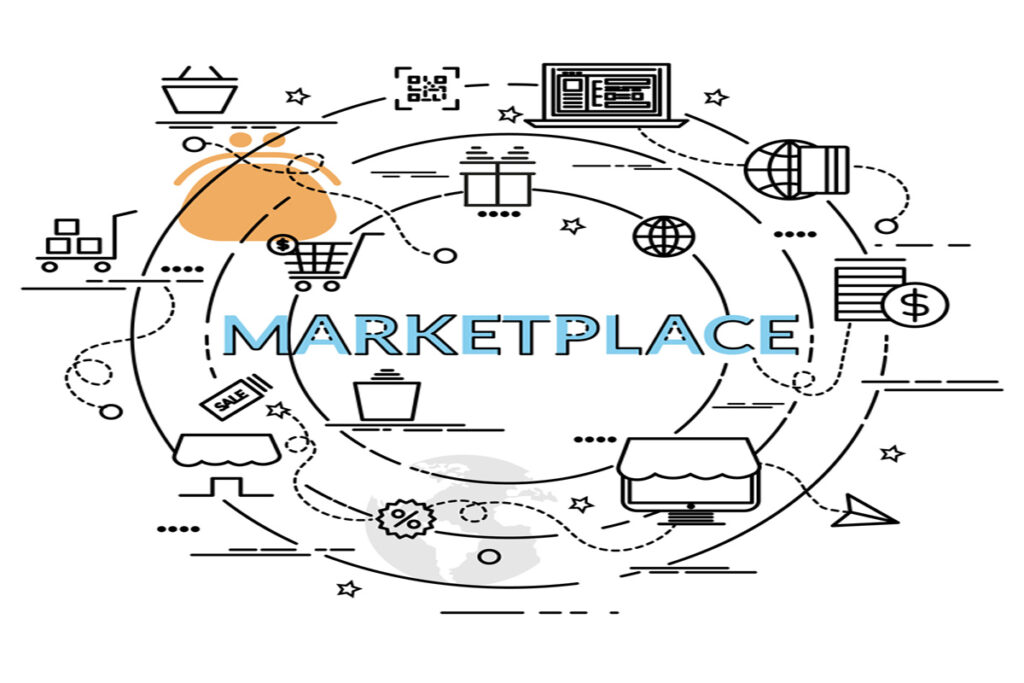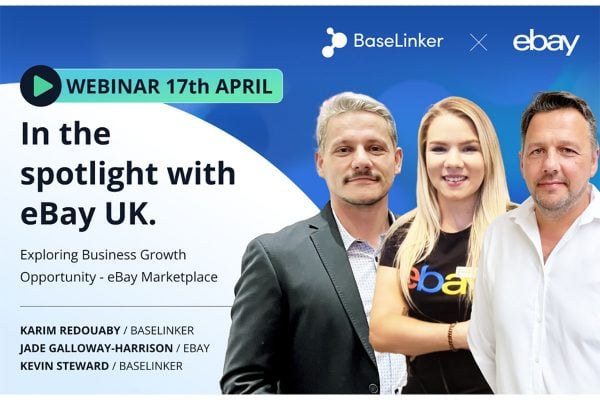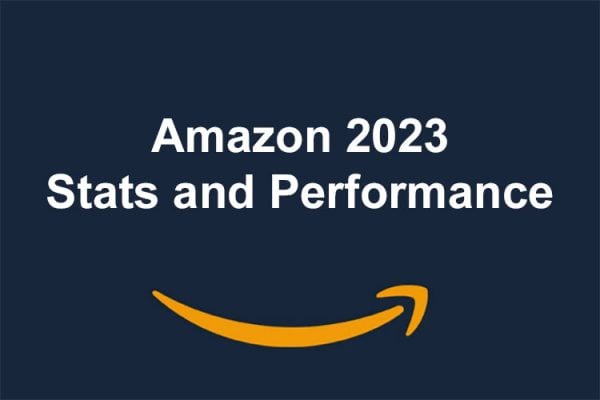Download or read online
This position paper on Marketplaces is available as a free download to read offline at your convenience, or carry on reading below.
Marketplaces
In the beginning was the internet – pretty much everything before that is irrelevant – and upon the face of the internet Pierre Omidyar put a broken laser pointer for sale – for $14.83. And Mark Fraser bought it, becoming the first person to use a marketplace site.
When asked by Omidyar whether he realised the laser pointer was broken, Fraser said, so the legend has it, “Yes. I am a collector of broken laser pointers”.
It is perhaps this that really is the Eureka moment for online retail: not that you could sell things, but that there is a long tail of people out there that will buy anything – you just have to connect the right person to the right product. This is exactly why online retailing in general, and marketplaces in particular work: they are distributed networks that give seemingly disparate groups the ability to connect to one another.
But why spoil a good story with over analysis? The point is that eBay was born from that one experiment. However, around the same time over in Seattle, former broker turned book seller Jeff Bezos was registering the domain name Amazon.com to start an online book store. Originally, he had called it Cadabra, but when his lawyer kept referring to it as Cadaver, he changed it.
Bezos may not have foreseen quite how ubiquitous in the US and UK Amazon would become, but he always had high hopes: the name Amazon was chosen because not only was it exotic, but because the Amazon is the biggest river in the world and Bezos was aiming to create the largest online bookstore in the world… and boy did he. He also was looking through a dictionary for a name: I guess despite his business genius, persistence isn’t one of his core skills.
These two things – the laser pointed emergence of eBay and bookish birth of Amazon –happened almost simultaneously and between them they created a whole new model for online retail: the marketplace.
Online retailing was still very much in its infancy at the time, having kicked off, officially at least, on 11 August 1994 when some poor soul bought Sting’s Ten Summoners Tales on CD from the web for $12.48. Amazon and eBay, both birthed a year or so later, tapped into this and haven’t really looked back.
Oh, and the first thing that Amazon sold? A copy of Douglas Hofstadter‘s Fluid Concepts and Creative Analogies: Computer Models of the Fundamental Mechanisms of Thought… I’ll leave you to decide if that is better or worse than a broken laser pointer.
What is a marketplace?
The official definition of a marketplace is “an e-commerce site where product and inventory information is provided by multiple third parties, whereas transactions are processed by the marketplace operator”.
In plain English, a marketplace is a third-party site that handles the sales of your goods – and more as you shall see. They are a bit like selling your stuff through someone else’s shop.
In an online marketplace, consumer transactions are processed by the marketplace operator and then generally delivered and fulfilled by the participating retailers or wholesalers (often called Drop Shipping) – although Amazon and many other marketplaces will also do all the fulfilment too if you pay them too these days.
In general, because marketplaces aggregate products from a wide array of providers, selection is usually wider, availability is higher and prices are more competitive (compared to vendor-specific online retail stores).
And they have been a rip-roaring success. From eBay and Amazon’s sub $20 first sales, a multi-trillion dollar global industry has been born that sees each country with its own selection of general and specialist marketplaces – and in many Amazon and eBay too. In fact, in Europe there are more than 400 marketplaces.
Today’s marketplace market
Amazon and eBay didn’t have the marketplace market to themselves for long back in the 1990s. Clearly, such a good idea travels well and by 1997 Japanese entrepreneur Hiroshi Mikitani had set up Rakuten Shopping Mall in Japan, with Rakuten meaning ‘optimisim’ – and today it remains Japan’s largest ecommerce website.
Over the next 10 years Rakuten set up a travel agency, a baseball team and a financial services arm – and eventually its own Rakuten Institute of Technology – buoyed by the increasing success of the site in Japan.
In 2011 it expanded, first into Indonesia and then Austria, Canada, Spain, Taiwan and Thailand, and on to the US and the UK.
It is now so entrenched in Europe that it is the sponsor of FC Barcelona for the 2017-18 season.
This boom in marketplaces led by Amazon, eBay and Rakuten spurred a whole host of others across the world and a putative boom in marketplaces being the key to ecommerce success globally.
Software to set up your own marketplace was rife in late 1990s and early 2000s, but most failed to ignite the imagination and most burned out quickly. The problem was that they couldn’t generate the traffic. The advantage that Amazon, eBay and Rakuten had was that they sold a wide – and ever increasing – range of goods and had become de facto shopping search engines.
One success has been Halfords. It set up a Halfords marketplace to sell third party car and bike related goods alongside its own inventory to offer the customer a one stop shop for all things car, bike and so on. This has proved moderately successful, largely because Halfords is careful over what makes it on to the site.
However, one relative newcomer has become a colossus. Alibaba joined the fray in 1997 in China – with founder jack Ma naming it after the Arabian Nights story as it had universal appeal and everyone associates it with ‘open sesame’ – as a consumer to consumer selling site. It wasn’t until 2003 that it launched Taobao Mall to offer B2C selling that things really took off. The launch coincided with China’s embracing of ‘Communist Capitalism’ and the almost overnight emergence of a massive middle class with spending power.
Today, Alibaba is up there with Amazon and eBay as the dominant players in the marketplace market – commanding a near monopoly in the Chinese market thanks to being well, native.
And it is looking to expand that. With Chinese shoppers increasingly looking further afield for luxury goods, Alibaba Group is already delving into the UK to pick up retailers looking to sell to this large shopper base.
It is ideal for many non-Chinese retailers as it gives them an easy way to tap into the Chinese market, with Alibaba handling the tricky issues of translation, last mile logistics and returns.
Other business models
While these behemoths have largely cornered the market in marketplaces in many countries, there are still a raft of other marketplaces that offer a different business model or experience that are also worth a look.
There are two kinds of marketplace: those that sell pretty much everything (such as Amazon, eBay, Rakuten etc…) and then those that specialise in a single product type (such as shoebuy.com, erento). Within this latter group there are many sites that have varying business models that are proving to be successful. Not Amazon successful, but worth of a mention.
Etsy differs from the other online marketplaces, in theory at least, because it is a community for crafters and sellers of ‘vintage’ goods. Unlike Amazon, it operates more like eBay used to, being a community of buyers and sellers.
Notonthehighstreet survives on selling all those unusual things that you can’t find anywhere else. Similar in many ways to Etsy, Notonthehighstreet seeks out smaller and independent sellers and artisans for stock, bringing them to a wider audience by doing all the ‘ecommerce stuff’ for them.
A new entrant to the market in the UK is OnBuy, which differentiates itself by offering zero selling fees, better margins and in-built marketing support across thousands of product lines across every retail category. It works on a subscription fee of £49 per month. It has been relatively successful so far, but time will tell.
Elsewhere in Europe there are many other specialist sites, or those that have grown out of established retailers, such as OTTO in Germany. OTTO is the second biggest online retail destination in Germany and claims to be the biggest online retailer there for fashion and lifestyle products. Long-established as an offline brand, now 90% of its goods are sold online and it also hosts a marketplace. OTTO sells goods itself, but is increasingly focused on third party sellers.
Similarly, in France, La Redoute is a long-established French fashion and homewares brand, specialising in middle-range to high-end stock. in 2010 it expanded its online offering to include a marketplace feature to allow third party sellers to sell goods on there too.
There is one other marketplace model that curiously is gaining some traction: local marketplaces. This month, the City of Paris set up its own marketplace – www.paris.shopping – created to gather a carefully selected curation of unique products from more than 100 Parisian designers and boutiques. It is hoped that the new marketplace will put these Parisian brands in front of some 2 billion shoppers from all over the world, giving them access to all the cool, niche boutiques the city has to offer.
The company behind it is hoping to expand the idea to other regions and cities.
But Paris is not the first to tap into local character and, some might say, stereotypes. Back in 2017, thatschampionpet.co.uk was launched, which aimed to act as a marketplace selling to the world the joys of the culture and products of the North East of England.
Since its launch it has expanded to cover not only Newcastle, but also Manchester, Leeds, Liverpool and, of course, Hull. While small, this shows that perhaps there is more to life than Amazon.
Retailers and brands on marketplaces
The rise of the marketplace has played both a pivotal role in the shaping of e and m-commerce as we know it today and in changing how people shop, for many years mainstream retailers and brands have shied away from using places such as Amazon and eBay to sell their own goods. The fear of brand damage, the handing over of customer service to a third party and even a race to the bottom on price have all been seen as negatives of using a marketplace by many.
But increasingly, whether they like it or not, these retailers and brands are having to start using marketplaces for one simple reason: it is where the customers are.
Already around 40% of UK shoppers use Amazon and eBay. If, as a retailer, you aren’t there then you are missing out.
In fact, increasingly any omni-channel retail strategy has to encompass marketplaces as well as all the other channels, as they provide an essential route to market – locally, nationally and internationally.
Marketplaces are for customers an ideal way to shop: they bring together all the goods supplied by competing retailers in one place that is easy to search, easy to price-compare, easy to customise delivery and all under a brand name that people trust. This can force retailers to be competitive on price – though increasingly this isn’t where they compete, as we shall see – and makes economic sense to shoppers.
They are also an easy place to search for goods, often acting as de facto search engines for shopping. Here in the UK, if I want something, I grab my phone, open Amazon and search for it – and I haven’t been disappointed yet.
In light of this, it is easy to see why consumers are opting to use marketplaces in increasing numbers and this sheer volume of shoppers turning to marketplaces is the number one reason why any retailer should be looking to have a presence on some or all of the major marketplace sites.
But the advantages for the retailer don’t end there. Adding marketplace trading to your existing portfolio of websites and stores not only increases your customer base – putting you where, increasingly, the shoppers are – but it can also expand you into new territories with minimal risk and cost, as well as taking much of the pain from warehousing and logistics.
Aside from that, marketplaces offer an ongoing way to support your business through their ability to help you add new stock and ranges, as well as helping to create an endless aisle for your business should you so wish.
The marketplace idea can also be used to transform your business, making you a marketplace for other third-party suppliers to sell to your audience, giving you new revenue streams, opening up your site to new shoppers and creating an image for your business as a ‘one-stop-shop’ in your market sector.
Brands such as SuperDry and Adidas have been using marketplaces for a couple of years now and prove the point. SuperDry – notoriously tight with its brands image – started using eBay to sell end of line and surplus inventory in a dedicated branded eBay store when it realised that other third parties where buying up its clearance stock and doing it themselves. The brand realised that handling eBay itself was better for band values than having no control at all over wanton third parties. Adidas along with many other sports brands has done the same.
Perhaps most interesting is car maker BMW. It now sells cars – yep a whole, real, brand-new car – on eBay through its eBay shop. It seems now that you can pretty much buy anything on a marketplace.
Where marketplaces are going
This marketplace dominance is set to continue. While today 40% of ecommerce traffic goes to marketplaces in the UK (similar in many other regions), this figure is only going to rise. The increase in acceptance of mobile commerce sees marketplace apps becoming even more useful to consumers: easier to search and easier to pay, often with one tap. This will drive up the percentage of ecomm sales going to mobile and to marketplaces.
Innovations by the marketplaces themselves is driving this. Amazon Dash buttons allow shoppers to have a small wifi device on their washing machine or other appliances that they simply press to re-order household goods such as washing powder.
The growing popularity of voice assistants – not least Amazon’s own Alexa, Google’s Home and Apple’s HomePod to name but three (rumour has it Spotify is about to join this gang) – is also going to change how people shop and push more shoppers towards marketplaces.
These devices that will let you verbally tell them what you want to buy will soon be ubiquitous ways of shopping from home and, yep, you guessed it, marketplaces are likely to repeat the rewards, rather than brands and established retailers – who instead will be forced to sell through marketplaces that have an affiliation with these devices and their makers.
However, this is only the start of the move to ‘distributed retail’. Where once retailers had their own ecommerce site, today they are having to sell through other people’s marketplaces to get in front of their own customers. Tomorrow, even that won’t be happening. Tomorrow, shoppers will just want to buy what they see regardless of where it comes from.
And if you think you can put off worrying about this for a while, it is already live. Worldwide media outlet and tech fanboy dream site, Mashable, is collaborating with eBay to offer easy-click, shoppable editorial across the UK and US – optimised for mobile.
This new, immersive mobile shopping experience will capitalise on Mashable’s role as the go-to source for all things new and next. Combining Mashable’s expert recommendations with the consumer discovery power of eBay, the partnership allows Mashable’s audience to use eBay to shop, browse and purchase products matching those featured on Mashable – all without ever leaving the Mashable site.
The companies have focused on a mobile-first experience that is as friction-free as possible for the audience and so far 65% of traffic to the widget has come via a mobile or tablet. The desktop experience is also as seamless as possible.
Soon the technology will be rife to point your phone camera at anything and buy it or something like it. Want that jumper that Obama is wearing on Mashable? Then tap it and buy it. Want those shoes that dude walking down the street in front of you is wearing? Point, click and buy.
This changes everything retailers know about retail. It also changes the role of what a retailer is. Now a retailer is a supplier to a range of marketplaces, who in turn supply search results – and probably on the fly best pricing or delivery or both – to an app on a phone that everyone uses.
This distributed retail model is exciting for consumers and marks the next big step for marketplaces – but is something that many retailers may find puts their old world business model in the bin.
Which brings us neatly back to where we started. That old, broken laser pointer: it never made it to the bin. In fact, broken laser pointer collector Mark Fraser kept it. He wasn’t a broken laser pointer collector at all, but he did keep it and in September 2015, on eBay’s 20th anniversary he gave it back to eBay founder Pierre Omidyar at a special 20th anniversary event back where it all began in San Jose. Neat huh?









